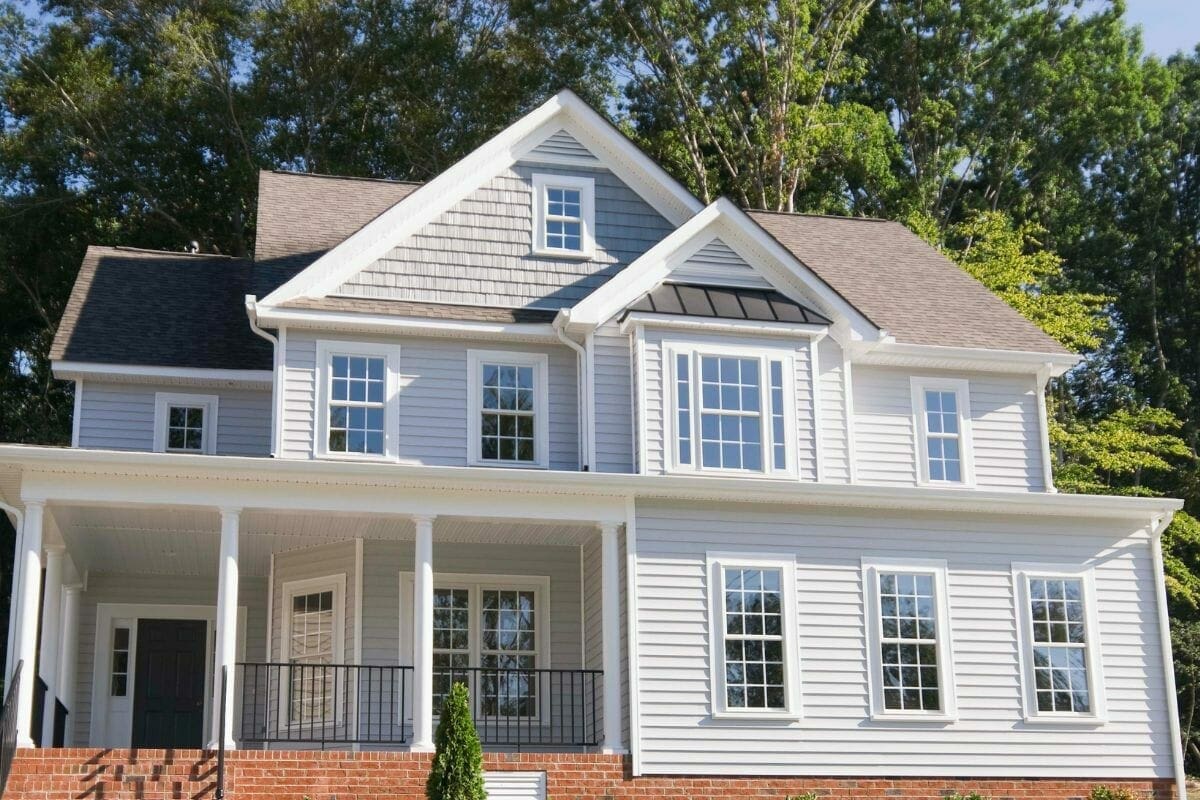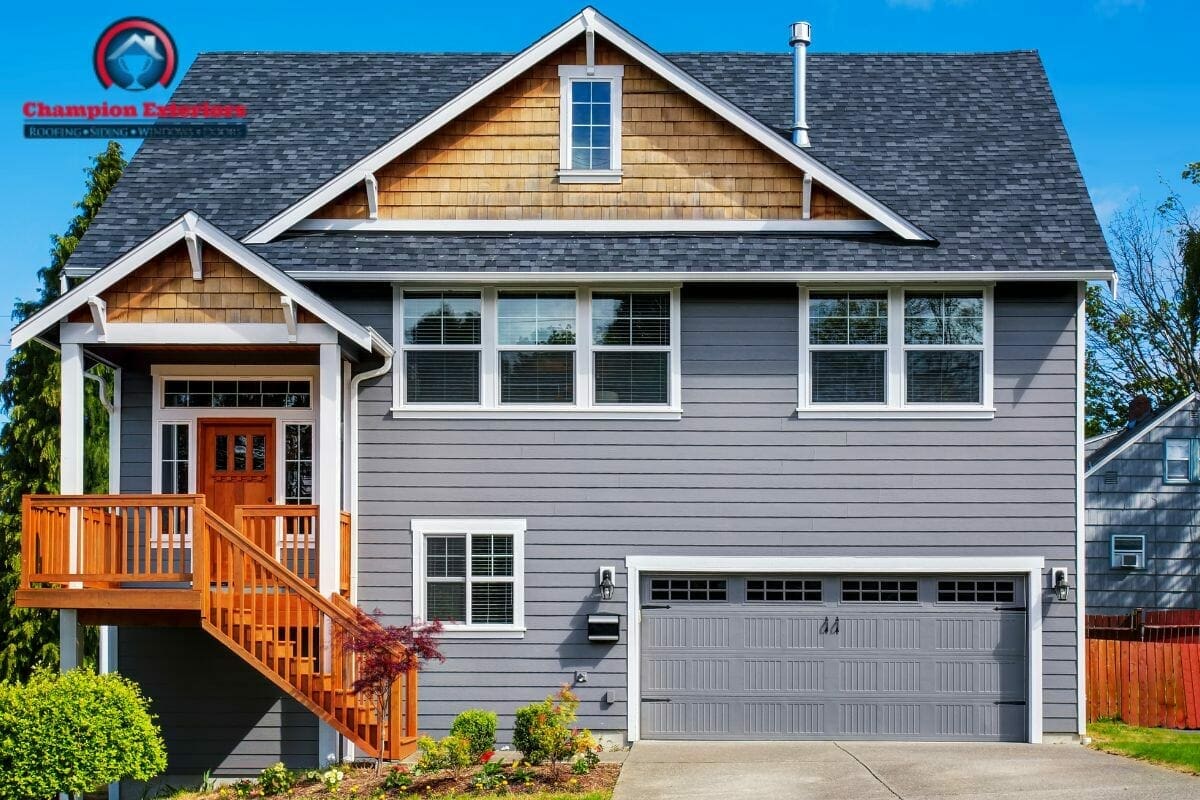Are you wondering how long your vinyl siding should last? With proper maintenance, vinyl siding can last around 20 to 40 years, but many factors affect the lifespan of vinyl siding.
In this blog, we have gathered all the information you need to know about vinyl siding in addition to factors that can cut short its lifespan, and how you should keep it maintained to protect both your home and family.
The Lifespan Of Vinyl Siding
When it comes to the longevity of vinyl siding, the lifespan can vary based on several factors. First, the quality of materials used in manufacturing vinyl siding can greatly affect how long it will last. Generally, higher-quality vinyl siding made from thicker materials, and reinforced with additives that prevent deterioration caused by UV rays, will last longer than lower-quality options.
Additionally, proper installation is crucial in determining how long the vinyl siding will last. If the siding is not sealed or secured correctly during installation, it can lead to leaks and other issues that can shorten its lifespan.
Regular maintenance and timely repairs can also greatly impact the longevity of vinyl siding. Cleaning the siding to remove dirt and grime, as well as monitoring it for any signs of damage, and making repairs as needed, can help extend the life of the siding. On average, vinyl siding can last anywhere from 20-40 years, but with the right approach to materials, installation, and maintenance, it can last even longer.

A Quick Comment On Vinyl Siding And Its Durability
With regard to building materials, vinyl siding is known for its durability and longevity. This is one of the main reasons it has become a popular choice among homeowners. Vinyl siding can withstand harsh weather conditions like rain, snow, and extreme temperatures, which can cause damage to other types of siding materials.
While vinyl siding is durable, it can still be damaged. Impact damage from falling branches or hail, as well as improper installation, can damage the siding. Therefore, regular cleaning and maintenance are essential to ensure the vinyl siding lasts a long time.
Factors That Shorten The Lifespan Of Vinyl Siding
Vinyl siding is a popular choice for homeowners due to its durability and low maintenance, but there are certain factors that can shorten its lifespan.
Extreme Weather Conditions
Intense sun, high temperatures, and moisture seeping into the siding cause vinyl siding to fade, crack and warp. Some other external factors, like rain, hail, and heavy storms lift and pull the siding panels apart, allowing water to enter the home through your walls.
With the presence of moisture within the bare walls, mold and mildew growth can be seen with the naked eye.
As the weather in New Jersey is quite varied and dependent on the seasons, vinyl siding can be impacted by the weather at any moment. Therefore, experts recommend that homeowners keep up with timely maintenance to look for, and find, damaged and rotting siding boards. This helps homeowners avoid paying higher costs on energy bills and repair projects in the future.
Poor Installation
Poor installation can give rise to many unexpected damages, shortening the lifespan of the vinyl siding. If the siding is not properly sealed or secured during installation it can leak and allow water to seep under the siding, causing water damage, mold, and other issues.
If the panels are not nailed down properly, storm winds may easily lift up the siding from your home, and potentially pull it off. Additionally, if the contractor did not pay attention to the space between the vinyl siding and the wall of your home for purpose of thermal expansion and contraction, there may be gaps where water can leak through. Poorly installed vinyl siding is also more prone to crack or warp in these conditions.
Low-Quality Material
Low-quality vinyl siding is less able to withstand extreme weather conditions. If the layers of your vinyl siding are thin, they will be more prone to cracking and deterioration. If this low-quality siding is also installed wrong, you may as well have no siding on your house at all.
Low-quality vinyl siding is not as durable compared to its high-quality counterpart. Sun and high heat will significantly impact the lifespan of this type of vinyl siding.
Vinyl Siding Maintenance
While vinyl siding is long-lasting and durable, it can become damaged by certain forces. Therefore, homeowners should practice regular maintenance routines to avoid falling prey to any natural damage. You can take the following steps to extend the lifespan of your exterior siding:
Inspection
First and foremost, if you have observed any damage, you must inspect all sides of your home to ensure there isn’t more. Particularly after it rains, you must inspect the vinyl siding and the roof. As we know, rain and hail damage can continue to cause further damage if it’s left unnoticed. Therefore, it is important for you to timely inspect your home when you come across any wear and tear, warping, and buckling in the siding.
Cleaning
When it comes to cleaning it is not necessary to use a commercial vinyl siding cleaner. Instead, you can use vinegar or any detergent you find in your home dissolved in warm water. If you’re cleaning and notice any mold or mildew growth on your siding you can use a soft-bristled brush to remove it completely.
When To Replace Vinyl Siding
Although vinyl siding is durable and long-lasting, it may become damaged before its lifespan of 20 to 40 years is over. Here are some signs to watch out for that signal your siding may need to be replaced:
Fading
The siding of your home is regularly exposed to the sun, and the sun’s UV rays can bleach and fade the color of your vinyl siding. With fading colors on vinyl siding, the color coding of the home exterior significantly unmatches. Additionally, the expansion or contraction caused by big changes in temperature may result in warping or buckling of the siding, which is another sign you need to replace it.
Cracks And Dents
It is also worth noting that vinyl siding can become brittle over time which could lead to cracking and breaking in cold temperatures. Cracks in vinyl siding can progressively grow if they go unnoticed.
Storm damage can also cause cracks and dents in your vinyl siding. Hail is the main culprit of this since some vinyl siding will not be able to withstand its level of impact. Rainwater may leak through these cracks or holes in your siding and cause the growth of plants and mold in your walls.
Make sure to inspect your siding before and after any major storms to ensure that nothing has become damaged, or is vulnerable to becoming further damaged during a weather event. This way you can prevent the need to spend more money on future repairs down the line.
Conclusion
Siding is one of the exterior elements that help draw visitors’ eyes to your home, and acknowledge your living standards. It not only provides your home with additional curb appeal but also prevents it from becoming damaged by external sources. As we have discussed in this blog, cracks, and dents not only progressively harm your home but also give it an unappealing look.
Installation is a crucial part of whether your siding will last or not. If you want to replace or install siding, make sure you’re having it done by skilled professionals. At Champion Exteriors, we are a team of professionals who can assist you with a number of services, including vinyl siding installation and replacement. Give us a call today, at (888)-926-2413 and find out how we can help you!


